Are you in the manufacturing industry and looking for a reliable and efficient machine to bend and shape metal sheets? Look no further than the hydraulic press brake. This powerful and versatile machine is a must-have for any metal fabrication workshop. With its ability to apply tremendous force, the hydraulic press brake can effortlessly bend metal sheets into precise angles and shapes. In this article, I’ll delve into the various features and benefits of the hydraulic press brake, making it an indispensable tool for your business.
Efficiency and accuracy are crucial when it comes to metal bending operations, and the hydraulic press brake delivers on both fronts. With its hydraulic system, this machine can exert immense force to bend even the thickest and toughest metal sheets. Whether you need to create sharp angles or intricate curves, the hydraulic press brake provides the precision and control required for the job. In this article, I’ll explore the different types of hydraulic press brakes available in the market and highlight their unique features.
When it comes to metal fabrication, time is money. That’s why the hydraulic press brake is a game-changer in the industry. With its quick setup and efficient operation, this machine allows for faster production cycles, increasing your overall productivity. Moreover, the hydraulic press brake’s user-friendly interface and advanced automation features make it easy to operate, reducing the learning curve for your operators. Stay tuned as I discuss the key advantages of incorporating a hydraulic press brake into your metal fabrication workflow.
What is a Hydraulic Press Brake?
A hydraulic press brake is a powerful and versatile machine used in metal fabrication workshops. It is designed to bend metal sheets into precise angles and shapes by applying tremendous force. The machine utilizes hydraulic pressure to generate the necessary force, making it highly efficient and accurate for metal bending operations.
One of the key advantages of a hydraulic press brake is its ability to provide precise control and accuracy. With its advanced hydraulic system, it can apply the right amount of force to bend metal sheets with precision, ensuring consistent results every time. This level of accuracy is crucial in industries where even the slightest deviation can lead to costly errors or compromised product quality.
The hydraulic press brake also offers quick setup and efficient operation, allowing for faster production cycles and increased productivity. Its user-friendly interface and advanced automation features make it easy to operate, reducing the learning curve for operators. This means that even those with limited experience can quickly adapt and start using the machine effectively.
Furthermore, the hydraulic press brake’s versatility allows it to handle a wide range of metal bending tasks. Whether it’s bending simple angles or complex shapes, this machine can handle the job with ease. Its adjustable bending speed and stroke length give operators the flexibility to adapt to different materials and thicknesses, making it suitable for various metal fabrication projects.
A hydraulic press brake is a valuable tool for metal fabrication workshops. Its precision, efficiency, and versatility make it an essential machine for bending metal sheets into precise angles and shapes. With its advanced hydraulic system and user-friendly interface, it offers quick setup, efficient operation, and increased productivity. Incorporating a hydraulic press brake into your metal fabrication workflow can greatly enhance your capabilities and output.
How Does a Hydraulic Press Brake Work?
A hydraulic press brake is a sophisticated machine that utilizes hydraulic pressure to bend metal sheets into precise angles and shapes with incredible force and accuracy. Understanding how this machine works can help you appreciate its efficiency and effectiveness in metal fabrication.
Here’s a step-by-step breakdown of how a hydraulic press brake operates:
- Hydraulic Fluid Supply: The machine is powered by hydraulic fluid, typically oil, which is stored in a reservoir. This fluid is then pumped into the hydraulic system to generate the necessary pressure for bending the metal.
- Hydraulic Pump: The hydraulic pump is responsible for pressurizing the fluid and delivering it to the hydraulic cylinders. It converts mechanical energy into hydraulic energy, creating the force required for bending.
- Hydraulic Cylinders: These cylinders are the heart of the hydraulic press brake. They contain pistons that move back and forth as the press brake operates. When the hydraulic fluid is forced into the cylinders, it pushes against the pistons, creating a strong force that bends the metal sheet.
- Ram and Die: The ram is attached to the hydraulic cylinders and moves up and down, exerting pressure on the metal sheet. The die, which is positioned on the press brake bed, provides the opposite force to shape the metal into the desired angle or shape.
- Backgauge: Many hydraulic press brakes come equipped with a backgauge system. This system consists of adjustable fingers that hold the metal sheet in place, ensuring accurate and consistent bending. The backgauge can be adjusted to accommodate different sheet sizes and bend angles.
- Control System: The control system is the brain of the hydraulic press brake. It allows the operator to input the desired bend angle and length, control the speed and pressure of the machine, and monitor the overall operation. The advanced automation features of modern hydraulic press brakes make them user-friendly and efficient.
By harnessing the power of hydraulic pressure, a hydraulic press brake can quickly and accurately bend metal sheets, providing metal fabrication workshops with increased productivity and precision. Understanding the inner workings of this machine can help operators utilize its capabilities to their fullest potential. So, let’s continue exploring the various aspects of the hydraulic press brake.
Types of Hydraulic Press Brakes
When it comes to hydraulic press brakes, there are several different types available in the market. Each type has its own unique features and advantages, catering to the diverse needs of metal fabrication workshops. Here are some of the most common types of hydraulic press brakes:
- Conventional Hydraulic Press Brake: This is the basic type of hydraulic press brake, often used for simple bending operations. It consists of a hydraulic ram that applies force to a bending die, which in turn bends the metal sheet. While it may not have advanced automation features, it is still a reliable and cost-effective option for many workshops.
- Synchronized Hydraulic Press Brake: This type of press brake uses a system of mechanical links and servo motors to synchronize the movement of the ram and the bending die. This ensures precise and consistent bending across the entire length of the metal sheet. Synchronized hydraulic press brakes are ideal for high-precision bending tasks.
- CNC Hydraulic Press Brake: The CNC (Computer Numerical Control) hydraulic press brake is a highly advanced and automated machine. It is equipped with a computerized control system that allows operators to program and store bending sequences. This type of press brake offers exceptional accuracy, repeatability, and versatility, making it suitable for complex and intricate bending operations.
- Tandem Hydraulic Press Brake: For metal fabrication workshops that require high bending capacity, the tandem hydraulic press brake is an excellent choice. It consists of two or more press brakes that work in tandem, allowing for the bending of longer and thicker metal sheets. This type of press brake offers increased productivity and efficiency.
- Servo-Electric Hydraulic Press Brake: As the name suggests, this type of press brake utilizes servo-electric motors instead of hydraulic systems. It offers precise control over the bending process, reduces energy consumption, and eliminates the need for hydraulic fluid. Servo-electric hydraulic press brakes are known for their quiet operation and low maintenance requirements.
By understanding the different types of hydraulic press brakes available, metal fabrication workshops can choose the one that best suits their specific bending needs. Whether it’s a conventional press brake for simple tasks or a CNC press brake for complex operations, investing in the right type of hydraulic press brake can greatly enhance productivity and efficiency in metal bending processes.
Advantages of Using a Hydraulic Press Brake
When it comes to metal fabrication, using a hydraulic press brake offers several advantages. Here are some of the key benefits of incorporating this powerful machine into your workshop:
- Versatility: One of the biggest advantages of a hydraulic press brake is its versatility. It can bend metal sheets into a wide range of angles and shapes, allowing you to create complex and intricate designs with precision. Whether you need to bend a simple L-shape or a more intricate curve, a hydraulic press brake can handle it all.
- Accuracy: Precision is crucial in metal fabrication, and a hydraulic press brake provides the level of accuracy needed for high-quality results. The hydraulic system exerts consistent pressure on the metal sheet, ensuring that each bend is uniform and precise. This eliminates the need for manual adjustments and reduces the risk of errors, resulting in a finished product that meets the desired specifications.
- Productivity: Time is of the essence in any metal fabrication workshop, and a hydraulic press brake can greatly enhance productivity. With its quick setup and efficient operation, this machine allows for faster bending processes, reducing production time and increasing output. The user-friendly interface and advanced automation features also minimize the learning curve for operators, enabling them to work more efficiently.
- Strength: Hydraulic press brakes are known for their immense power and force. They can handle heavy-duty bending tasks without compromising on quality. The hydraulic pressure exerted by the machine ensures that even thick and tough metal sheets can be bent with ease, making it a reliable tool for demanding fabrication projects.
- Safety: Safety is a top priority in any workshop, and hydraulic press brakes prioritize operator safety. These machines are equipped with safety features such as guards and emergency stop buttons to prevent accidents and injuries. Additionally, the hydraulic system provides precise control over the bending process, reducing the risk of mishaps.
Incorporating a hydraulic press brake into your metal fabrication workshop can revolutionize your bending processes. With its versatility, accuracy, productivity, strength, and safety features, this machine is a valuable asset that can greatly enhance your operations.
Common Applications of Hydraulic Press Brakes
Hydraulic press brakes are widely used in various industries for their versatility and ability to bend metal sheets with precision. Here are some common applications where hydraulic press brakes are essential:
- Metal Fabrication: Hydraulic press brakes play a crucial role in metal fabrication processes, such as forming, bending, and shaping metal sheets. They are used to create components for a wide range of industries, including automotive, aerospace, construction, and manufacturing.
- Sheet Metal Work: Hydraulic press brakes are extensively used in sheet metal fabrication. They can bend and shape sheet metal into different angles and shapes, allowing the creation of various products like cabinets, enclosures, brackets, and panels.
- Automotive Industry: Hydraulic press brakes are heavily utilized in the automotive industry for manufacturing vehicle components like frames, chassis, doors, and fenders. The ability to produce precise bends makes hydraulic press brakes indispensable in producing high-quality automotive parts.
- Appliance Manufacturing: Hydraulic press brakes are essential in the production of appliances like refrigerators, washing machines, and air conditioners. They are used to form and bend metal panels and casings, ensuring the structural integrity and aesthetic appeal of the appliances.
- Construction: Hydraulic press brakes are commonly used in the construction industry for fabricating structural components like beams, columns, and trusses. These components require precise bending to ensure stability and durability in construction projects.
- Signage and Advertising: Hydraulic press brakes are utilized in the creation of signage and advertising materials, including letters, logos, and display panels. They enable the fabrication of custom-designed signs with accurate bends and shapes.
- Furniture Manufacturing: Hydraulic press brakes are employed in the furniture industry to bend and shape metal parts for chairs, tables, cabinets, and other furniture pieces. They contribute to the overall strength and aesthetics of the furniture.
By understanding the common applications of hydraulic press brakes, industries can leverage the capabilities of this versatile machine to enhance productivity and efficiency in their respective fields. Whether it’s metal fabrication, automotive manufacturing, or construction, hydraulic press brakes are a valuable asset in achieving high-quality results in bending and shaping metal sheets.
Choosing the Right Hydraulic Press Brake for Your Needs
When it comes to selecting a hydraulic press brake for your metal fabrication workshop, it’s crucial to consider your specific bending needs. Here are a few factors to keep in mind:
- Capacity: Determine the maximum thickness and length of metal sheets you’ll be working with. This will help you choose a press brake with the right tonnage and bed length to handle your requirements.
- Bending Accuracy: Consider the level of precision you need in your bending operations. Look for press brakes with advanced features like CNC controls and back gauge systems to ensure accurate and consistent bends.
- Versatility: Think about the variety of angles and shapes you’ll be bending. Choose a press brake that offers a wide range of tooling options and adjustable parameters to accommodate your diverse bending needs.
- Automation: Evaluate the level of automation you require for your bending processes. Press brakes with programmable features and automatic tool changers can greatly enhance productivity and efficiency.
- Safety: Ensure that the press brake you choose prioritizes operator safety. Look for safety features such as light curtains, two-hand controls, and emergency stop buttons to prevent accidents and injuries.
By considering these factors, you can select the right hydraulic press brake that aligns with your specific bending needs, enhancing productivity and efficiency in your metal fabrication workshop. Remember, each workshop may have unique requirements, so take the time to evaluate and choose wisely.
Let’s delve into the common applications of hydraulic press brakes in various industries.
Maintenance and Care for Hydraulic Press Brakes
Proper maintenance and care are crucial for ensuring the longevity and optimal performance of hydraulic press brakes. By following a few simple guidelines, metal fabrication workshops can keep their press brakes running smoothly and avoid costly repairs or downtime. Here are some essential maintenance tips:
- Regular Inspection: Conduct regular inspections of the press brake components, including the hydraulic system, electrical connections, and mechanical parts. Look for any signs of wear, leaks, or damage. Addressing small issues early on can prevent them from developing into major problems.
- Lubrication: Keep the press brake well-lubricated to reduce friction and prolong the lifespan of moving parts. Follow the manufacturer’s recommendations for lubrication intervals and use high-quality lubricants suitable for the specific components.
- Cleaning: Clean the press brake regularly to remove debris, dust, and metal shavings that can accumulate on the machine. Use appropriate cleaning methods and avoid using abrasive materials that could damage the surfaces.
- Adjustments and Calibration: Periodically check and adjust the alignment, parallelism, and clearance of the press brake’s components to ensure accurate bending results. Calibration of the machine’s control system is also necessary to maintain precise control over the bending process.
- Safety Checks: Inspect the safety features of the press brake, such as emergency stops, safety guards, and interlocks, to ensure they are functioning correctly. Regularly train operators on safety protocols and encourage a safety-conscious work environment.
- Operator Training: Provide comprehensive training to operators on the proper operation and maintenance of the hydraulic press brake. This includes understanding the machine’s controls, safety features, and maintenance procedures. Well-trained operators can help identify potential issues and perform routine maintenance effectively.
Remember, regular maintenance and care not only extend the lifespan of the hydraulic press brake but also contribute to the safety of the operators and the overall efficiency of the metal fabrication workshop. By implementing these maintenance practices, you can maximize the productivity and performance of your hydraulic press brake for years to come.
Conclusion
Proper maintenance and care are vital for the longevity and optimal performance of hydraulic press brakes. Regular inspections, lubrication, cleaning, adjustments and calibration, safety checks, and operator training are essential maintenance practices. By following these guidelines, metal fabrication workshops can ensure that their press brakes continue to operate smoothly, avoiding costly repairs or downtime. Additionally, proper maintenance helps to maximize productivity and performance, allowing businesses to meet their production goals efficiently. Investing time and effort into maintaining hydraulic press brakes not only extends their lifespan but also enhances overall operational efficiency. By prioritizing maintenance, businesses can minimize the risk of equipment failure, improve safety, and optimize the performance of their hydraulic press brakes.



